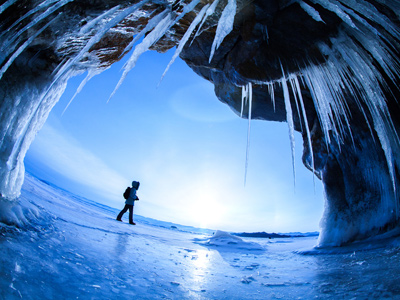Your high school geography syllabus requires that you know about the distinctive landforms that result from the action of ice on the land. This quiz is concerned with helping you to revise the key depositional features left behind as a glacier or an ice sheet melts.
The Earth has been subjected to several ice ages, the most recent taking place in the quaternary period during the pleistocene epoch. It began about 120,000 years ago and ended around 10,000 years ago. The fact that it lasted 110,000 years does not mean that it was continuous, nor does it mean that the whole Earth was ice-covered. The glaciers and ice sheets advance and retreat periodically during an ice age. When they have retreated, it is called an interglacial, in fact, it is not known if the quaternary ice age has actually ended, we may just be in an interglacial. But don't worry, it takes centuries or even thousands of years for the ice sheets and glaciers to develop or melt.
As ice sheets and glaciers melt, they leave behind (deposit) the material that they are carrying. Some of this is being carried within the ice and some is on the top surface. The unsorted rock debris that lies on top of the glacier is called moraine. Lateral moraines are at the edges and, where two glaciers meet, the lateral moraines are then combined at the center of the new glacier to form a medial moraine. When the glaciers melt, both types of moraine are left in the bottom of the valley cut by the glacier as steep-sided and unsorted piles of rock that run the length of the valley.
The front of the glacier is called the snout and where it melts, it leaves a moraine behind. This is made from the rock that has been carried along on the surface of the ice as well as rock within the ice and rock that has been pushed forwards by the movement of the glacier. A terminal moraine marks the furthest point to which the ice extended. Gradually, soil forms and plants and animals colonize this and all of the other moraines.
The ice of the glacier or ice sheet contains not only rocks, but also finely ground up rock powder (termed rock flour) which is mixed in with the ice. When the ice melts, this is deposited as a material known as glacial till. This is a stony soil, usually very clay-like that forms a fairly flat but slightly undulating landscape surface. In some places, hillocks that are about one to two kilometers in length, between three hundred and six hundred meters wide and no more than fifty meters high have been left by the retreating ice. These are called drumlins.








